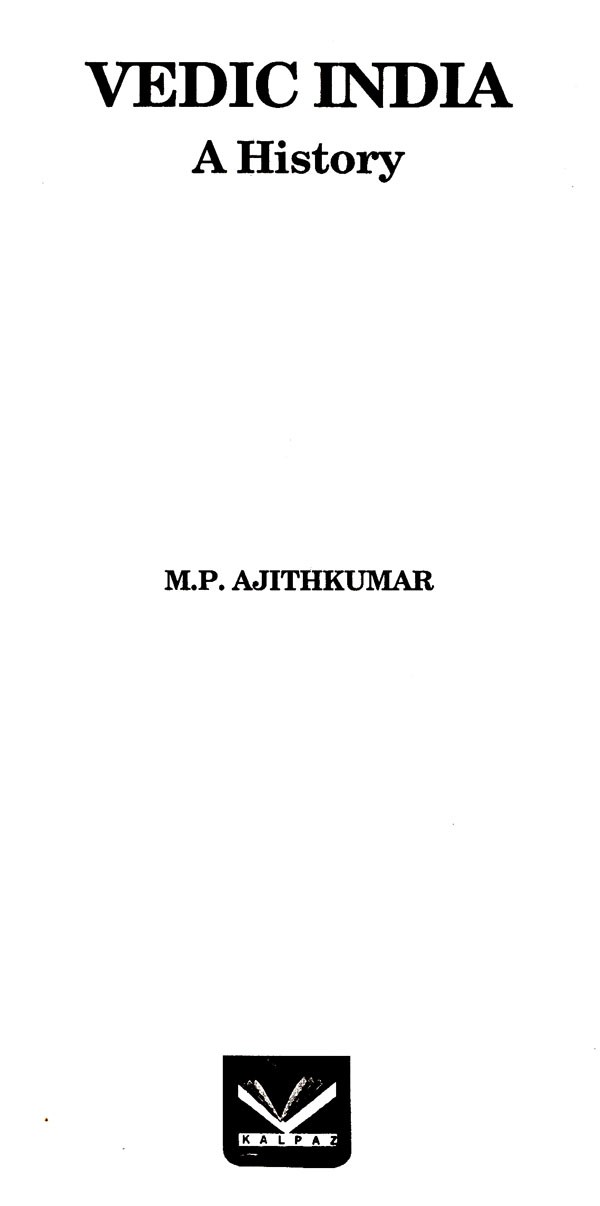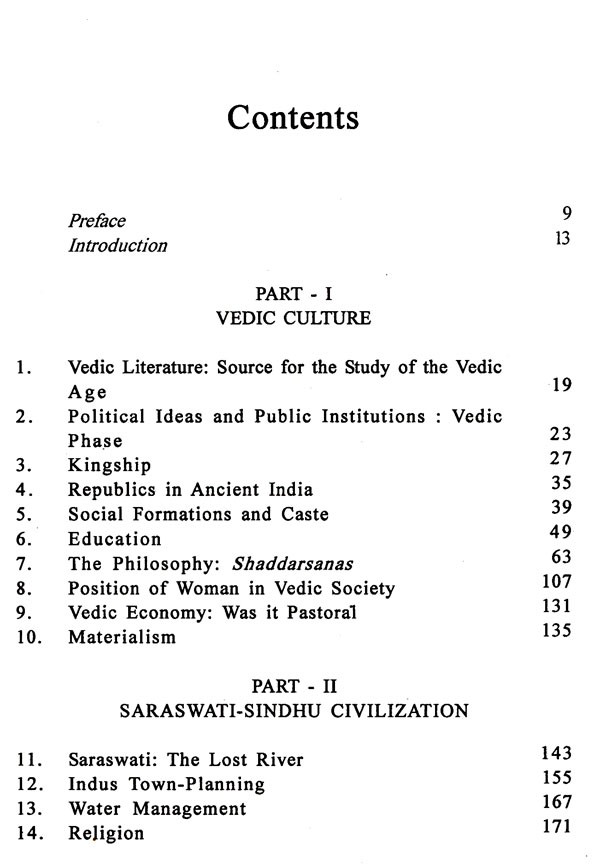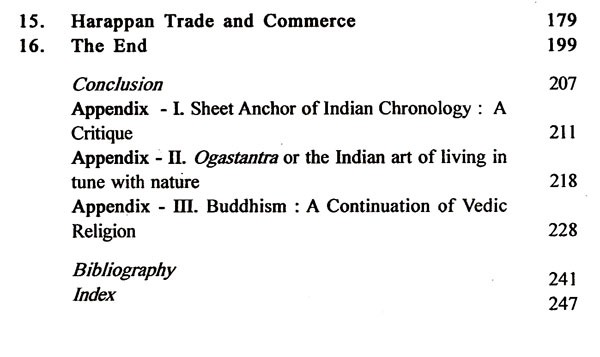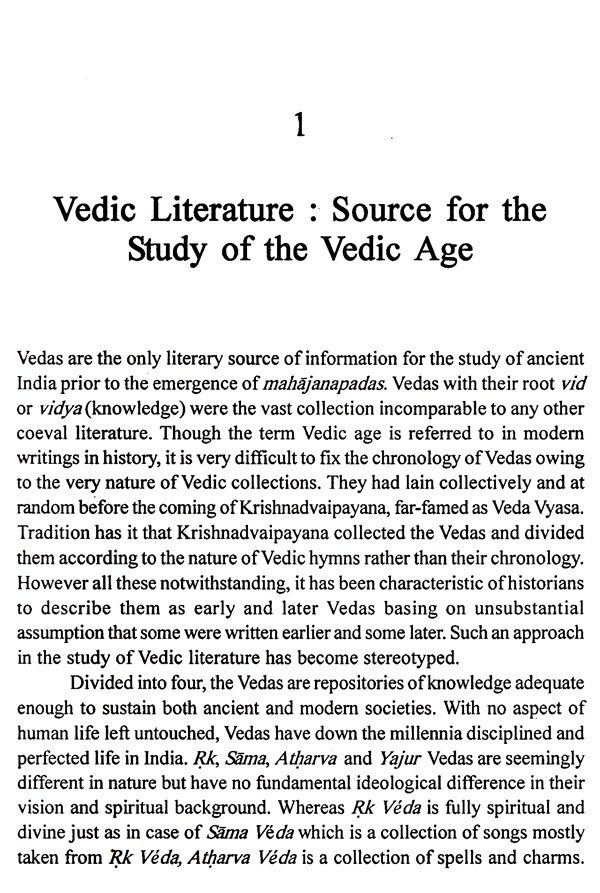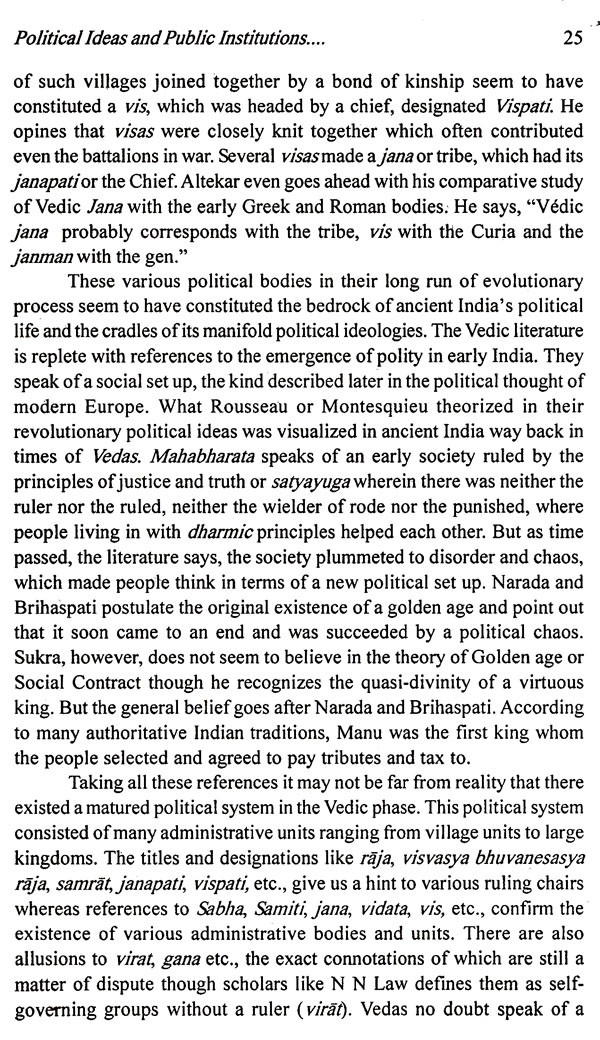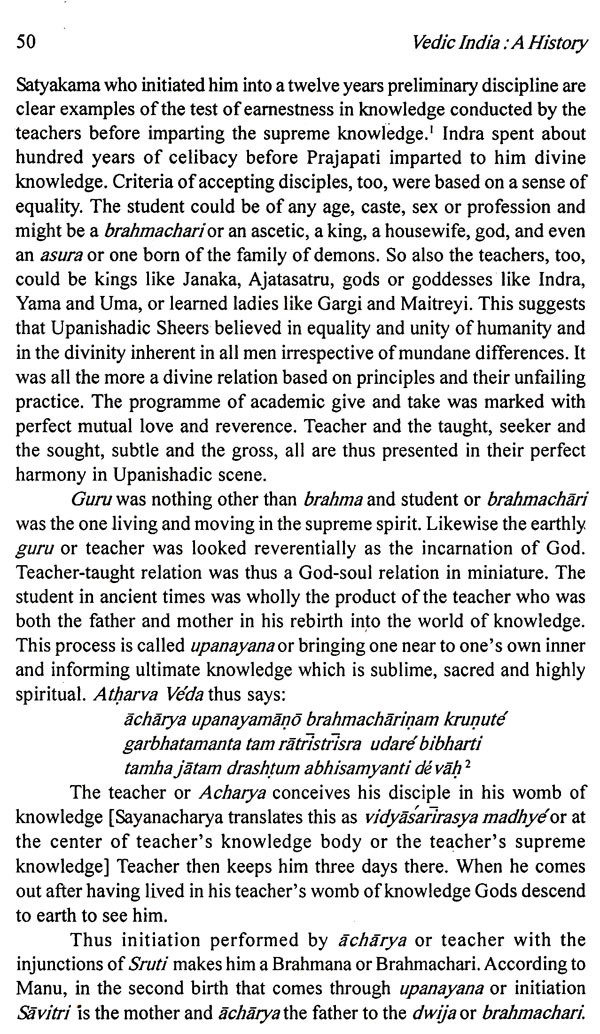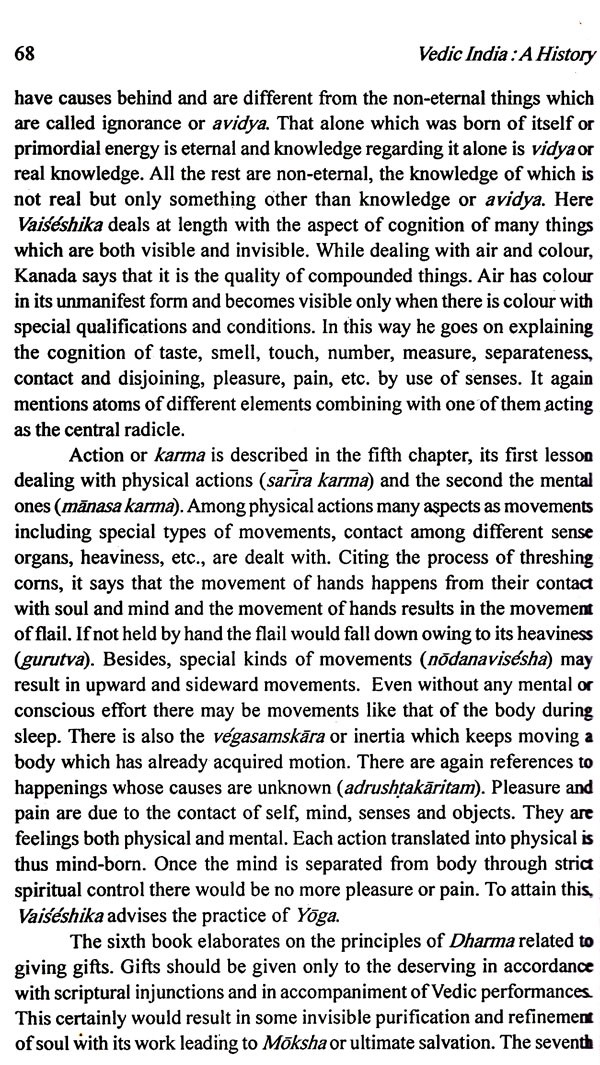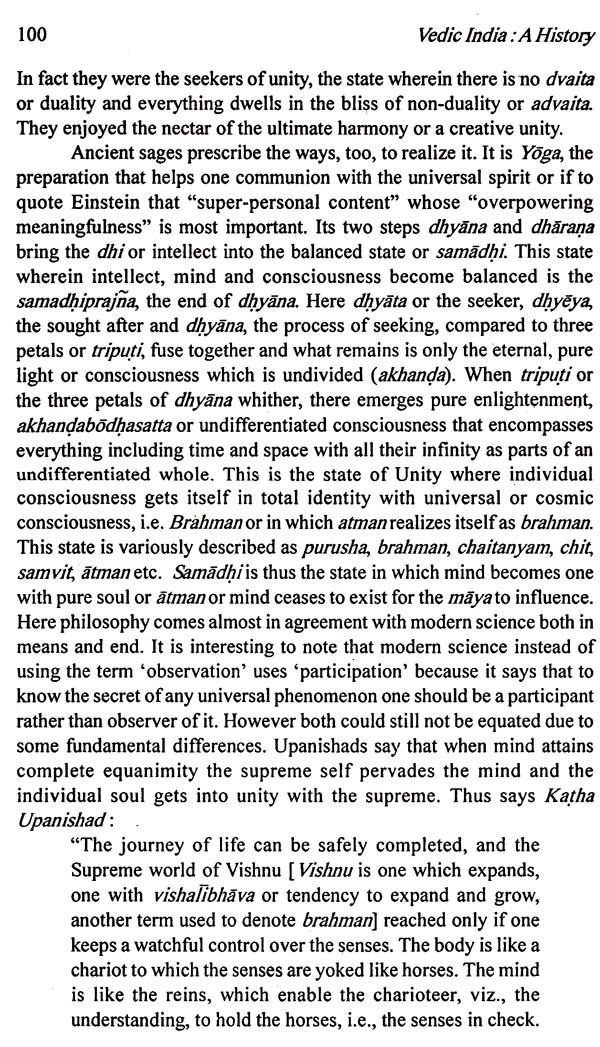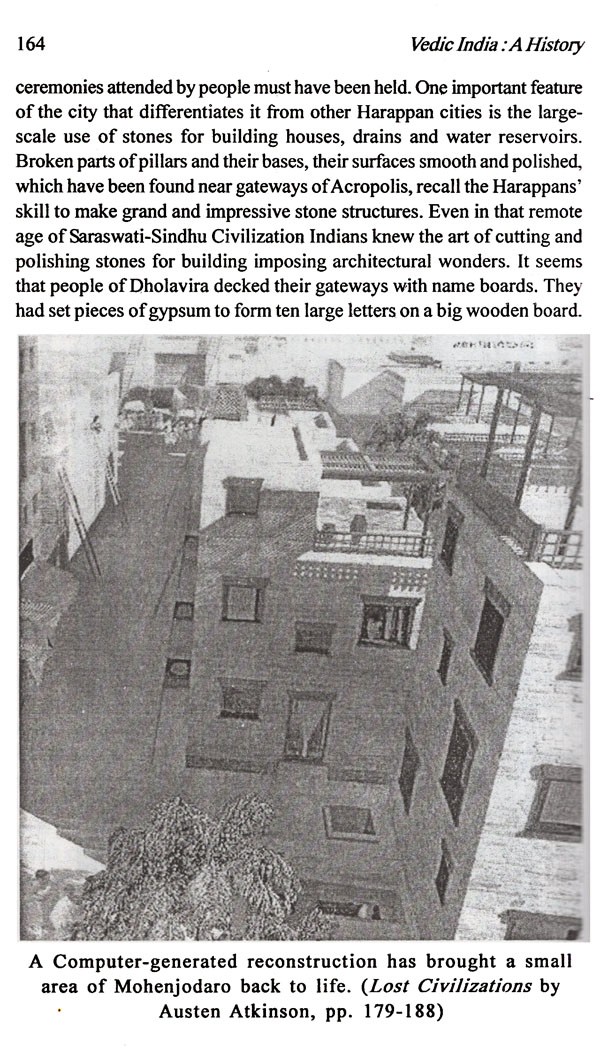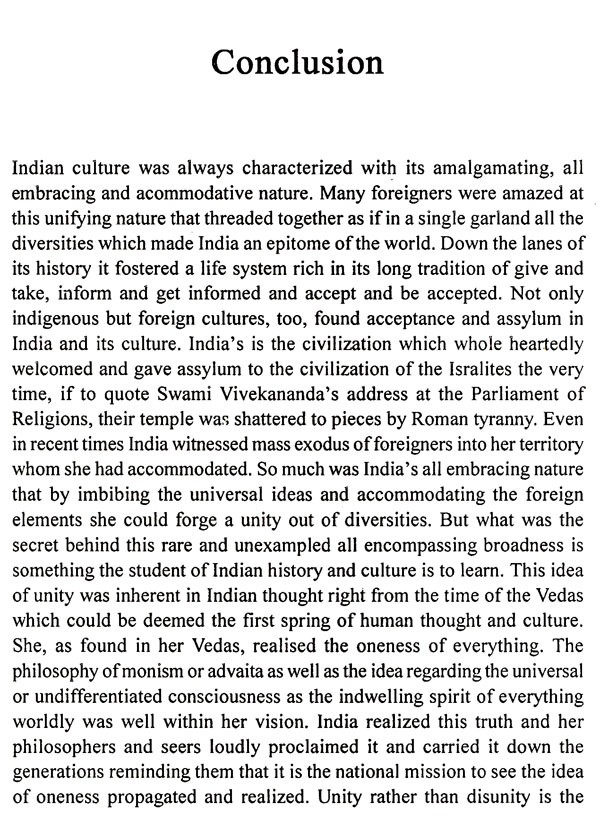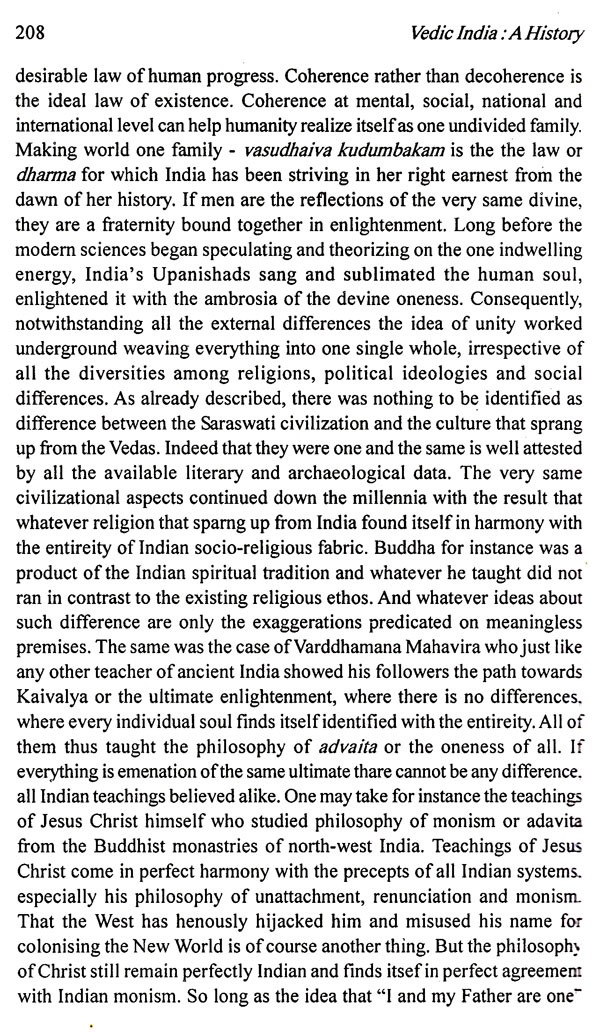
Vedic India: A History
Book Specification
| Item Code: | UBC721 |
| Author: | M. P. Ajithkumar |
| Publisher: | Kalpaz Publications |
| Language: | English |
| Edition: | 2013 |
| ISBN: | 9788178359380 |
| Pages: | 256 |
| Cover: | HARDCOVER |
| Other Details | 9.00 X 6.00 inch |
| Weight | 460 gm |
Book Description
This book covers the long historic period of Vedas which may well be called Vedic India or India of the period which effloresced into knowledge systems, all having their roots in Vedas and Vedic tradition. Evidences speak volumes about the similarity of cultures and their ideas that sprang up in India. Teachings of the Vedas, Mahavira and the Buddha and new findings from Saraswati-Sindhu valley speak of a common culture. Hence the conclusion that they all belong to the same tradition and that they are not mutually contradictory and conflicting.
Written in the light of original sources, the book gives new insights into many areas of ancient Indian history and culture. The entirely new approaches with new and original interpretations which are scientific and objective provide lay men with an interesting reading while to students and researchers it gives new hypotheses and desirable visions in Indology.
But in many cases mistakes happened inadvertently to the writers of Indian history due to the paucity of research materials resulting in their improving little upon what was written before. Naturally, there came in stagnation of ideas, repetition of statements and redundancy. It was all an exercise within the circle already drawn by European Indologists. The development of Indology as a subject owes exclusively to the efforts of European scholars whose contributions to write Indian history cannot be underrated though most of them, as evident from many of their interpretations of India's past, had vested interests. While a few of them studied India's history as part of academic pursuit, colonialist interests prompted the majority. True, their lack of knowledge in India's early literature and unfamiliarity with an ancient culture and its heights which they could not scale combined with their colonialist interests resulted in many a folly and deliberate distortions. However, their efforts in laying the foundations of Indology as a special faculty deserve plaudits. But attitude of the later Indian indologists was almost deplorable, their having merely continued to parrot the opinions of European indologists rather than acting as corrective developers over the legacy the latter left behind. There was of course research on Indian history and many of its auxiliary subjects, particularly archaeology, which had unearthed facts in abundance that helped rewrite the history of ancient India. But such materials always remained at the level of high research, never reaching students of usual run through textbooks and general study materials. Besides, such novel findings did not get the acceptance of syllabi makers, academic councils and board of studies of centers of higher learning Consequently for almost a century, old ideas and views held sway with the world of students at undergraduate and postgraduate levels remaining ignorant of these novel developments in Indian historical studies or unfamiliar with logics required to have the real understanding of Indian history.
Till the end of the later half of twentieth century many erroneous ideas including that of Aryan invasion and Sheet Anchor of Indian chronology dominated the domain of Indology. Most conclusions regarding the history of ancient India were predicated on this sort of premises, which lacked academic tenability. Hence the necessity of an intelligible recasting of ancient Indian history so that many confusions and misunderstandings could be avoided.
This book covers the long historic period of Vedas which may well be called Vedic India or India of the period which effloresced into knowledge systems, all having their roots in Vedas and Vedic tradition. Evidences speak volumes about the similarity of cultures and their ideas that sprang up in India. Teachings of the Vedas, Mahavira and the Buddha and new findings from Saraswati-Sindhu valley speak of a commom culture. Hence the conclusion that they all belong to the same tradition and that they are not mutually contradictory and conflicting as described in some writings.
Here a humble attempt is made to present things in a right perspective. Differences are within the law of nature. Multiplicity and diversity bring about the beauty of universal order. 'From multiplicity to unity or diversity to harmony' is the only desirable law of universal progress. The aim of any type of study must be to evolve coherence out of de-coherence in such a way as to realize the oneness latent in humanity and universe. This rule is applicable to all faculties of knowledge including historical studies though the present trend as seen in many areas of historical research, especially Indology, is the pursuit of differences, decoherence and disintegrations and resultant anarchy at all levels, mental, material and what not. Thus as one of the prime faculties devoted to the cause of universal unity the faculty of historical studies is commissioned with the duty of making an enquiry into this oneness and actualizing it to the most possible extent. This being the mission of historical studies, it is desirable to have an enquiry into the elements of unity in India's ancient history and culture.
May I extent my hearty thanks to those who helped me write this work. I am indebted to my undergraduate students at my College whom I have been teaching Indian history and culture for the last few years. In fact the lecture notes I have prepared for them constitute the chapters of this book. I also express my thanks to Dr. V.R. Manoj, Deputy Director, Chinmaya International Foundation, Adi Sankara Nilayam, Kochi who helped me give diacritic notes to the Sanskrit verses. Thanks are also to Smt. T.S. Kartika, Associate Professor of Philosophy, N. S. S. Hindu College, Changanacherry, Kerala who contributed the appendix, 'Buddhism: A Continuation of the Vedic Religion'.
**Contents and Sample Pages**
